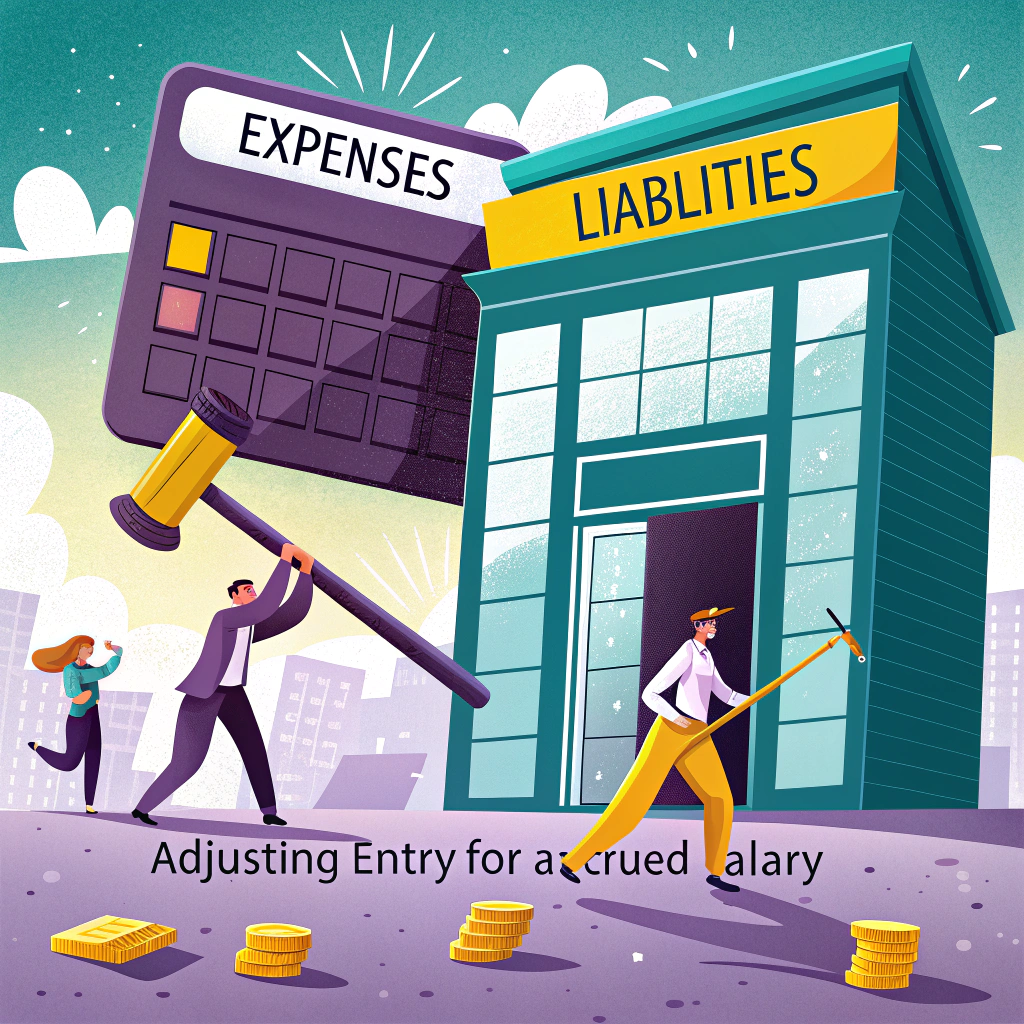Navigating the Accounting Maze
So, it’s the end of the accounting period, and your employees have been working hard, clocking hours like champs. But here’s the catch: payday isn’t until next month. Uh-oh! So what do you do with those wages they’ve earned but haven’t seen yet? You can’t just pretend they don’t exist (tempting as that may be). Enter Accrued Salary.
It is a prime example of accrued expenses that require adjusting entries. Why? Because the date you pay your employees doesn’t always sync up with your accounting period’s end date. To keep your books honest (and the accounting gods happy), you need to record accrued salary payable. This accounts for money owed to employees for work they’ve done but haven’t been paid for as of the end of the accounting period.
These adjusting entries for accrued salary are part of the accrual accounting method. In this article, we’ll break down everything you need to know about adjusting entries for accrued salary, with examples that’ll make you say, “Ah-ha!”
Related: How to do adjusting entries with examples
What are accrued salary? (Hint: It’s Not Just Another Line Item)
Alright, let’s demystify this beast called accrued salary (or accrued wages, because fancy terms make us feel important). In plain English, it’s the money your employees have earned by working their socks off, but you haven’t paid them yet. Think of it as the financial equivalent of an IOU to your team.
This amount sits as a liability on your balance sheet under the sneaky little line item called “accrued expenses.” Why? Because it’s an expense you’ve incurred (thanks to your awesome employees) but haven’t shelled out cash for yet. And accountants love to keep track of money owed—can’t let any dollars escape unnoticed!
Usually, you accrue a salary expense in one period and dish out the dough in the next. In other words, you record the accrued salary expense in your books at the end of the accounting period—even if your employees are still waiting for their paychecks. That means making a journal entry that debits the salary expense account and credits the accrued salary (or wages payable) account. Then, when payday finally arrives and you hand over the cash, you debit accrued salary against cash. This adjusting entry for accrued salary shows the expense has been paid, wiping out the liability from your books. Magic!

See also: Adjusting entry for bad debt expense
Adjusting Entry for Accrued salary Explained
Let’s dig a little deeper into how this adjusting entry for accrued salary works. It’s one of the usual suspects in the lineup of adjusting entries in accounting. Typically, when you pay your employees, you’d debit the salary expense account and credit the cash account—straightforward, right? But life isn’t always that simple.
If your company doesn’t cut those paychecks on the last day of the accounting period (because who schedules payday perfectly every time?), you’ve got to record those unpaid salary as accrued. That means making an entry for salary incurred but not yet paid. Then, when you finally hand over the cash, you make an adjusting entry to clear out the accrued salary. Easy peasy!
Here’s how you do the deed: to record accrued salary, you debit the salary expense account and credit the salary payable (or accrued salary) account. Think of it as saying, “We owe our employees this much for their hard work!” The salary expense account shows up on your income statement and reduces your net income (bummer, but honesty is the best policy). The accrued salary account, on the other hand, is a short-term liability on your balance sheet—a reminder that you owe money.

Here’s what the initial accrued salary journal entry looks like:
| Date | Account | Debit | Credit |
| Salary Expense | 00 | ||
| Accrued Salary | 00 |
This entry recognizes the cost of your employees’ labor during the accounting period—even if you haven’t paid them yet. It’s all about keeping your financial statements accurate and in line with reality (and keeping the auditors off your back).
Then, when payday rolls around and you finally part ways with your cash, you make the following adjusting entry to wipe out the liability:
| Date | Account | Debit | Credit |
| Accrued Salary | 00 | ||
| Cash | 00 |
This entry says, “We paid our employees—liability settled!” And just like that, your books are balanced, and everyone’s happy (especially your employees).
Read also: Accrued revenue adjusting entry
Examples of Adjusting Entry for Accrued salary
Enough theory—let’s dive into some examples to see how this works in the real world. After all, who doesn’t love a good story involving numbers?
Accrued salary Adjusting Entry: Example 1
Imagine you’re running a company, and you pay your employees’ wages in the following month. Let’s say, as of the end of January, you owe your employees $15,000. Time to make that accrued wages journal entry:
This entry recognizes the $15,000 you owe your employees for work they’ve done in January.
Then, when you pay them in February, you make the following adjusting entry:
| Date | Account | Debit | Credit |
| 2 Feb | Accrued Salary | $15,000 | |
| Cash | $15,000 |
This entry clears out the accrued wages liability and shows that you’ve paid your employees. Everyone’s happy, and your books are squeaky clean.

Adjusting Entry for Accrued salary: Example 2
Meet Jotscroll Media Company. They pay their employees on the 3rd day of the following month. So, for December 2022 salary amounting to $20,000, the payment will be made on January 3, 2023. But we can’t just ignore December’s expenses in the year-end financial statements, can we? Time to record the accrued salary as of December 31:
| Date | Account | Debit | Credit |
| 31 Dec | Salary Expense | $20,000 | |
| Accrued Salary | $20,000 |
This entry makes sure that Jotscroll Media’s expenses—and liabilities—for December are accurately recorded. Without it, both total expenses and total liabilities would be understated by $20,000. Not good!
Then, when they pay their employees on January 3, they make the following adjusting entry to clear the liability:
| Date | Account | Debit | Credit |
| 3 Jan | Accrued Salary | $20,000 | |
| Cash | $20,000 |
By making this entry, Jotscroll Media eliminates the $20,000 liability from their books, and everyone’s paid up. 2023 starts on a good note!
Accrued salary Adjusting Entry: Example 3
Let’s take one more for the road. Suppose a firm pays monthly salary of $40,000 on the 4th day of the next month. As of June 30, 2022—the end of the financial year—the company owes $40,000 to its employees, which it will pay on July 4, 2022 (Happy Independence Day!). To make sure their financial statements are accurate, the company needs to record the accrued salary on June 30:
| Date | Account | Debit | Credit |
| 30 June | Salary Expense | $40,000 | |
| Accrued Salary | $40,000 |
Then, when they pay the salary on July 4, they make the following entry:
| Date | Account | Debit | Credit |
| 4 July | salary Payable | $40,000 | |
| Cash | $40,000 |
By recording these entries, the firm ensures its financial statements tell the true story of its expenses and liabilities. Plus, the employees get their well-deserved pay. It’s a win-win!
